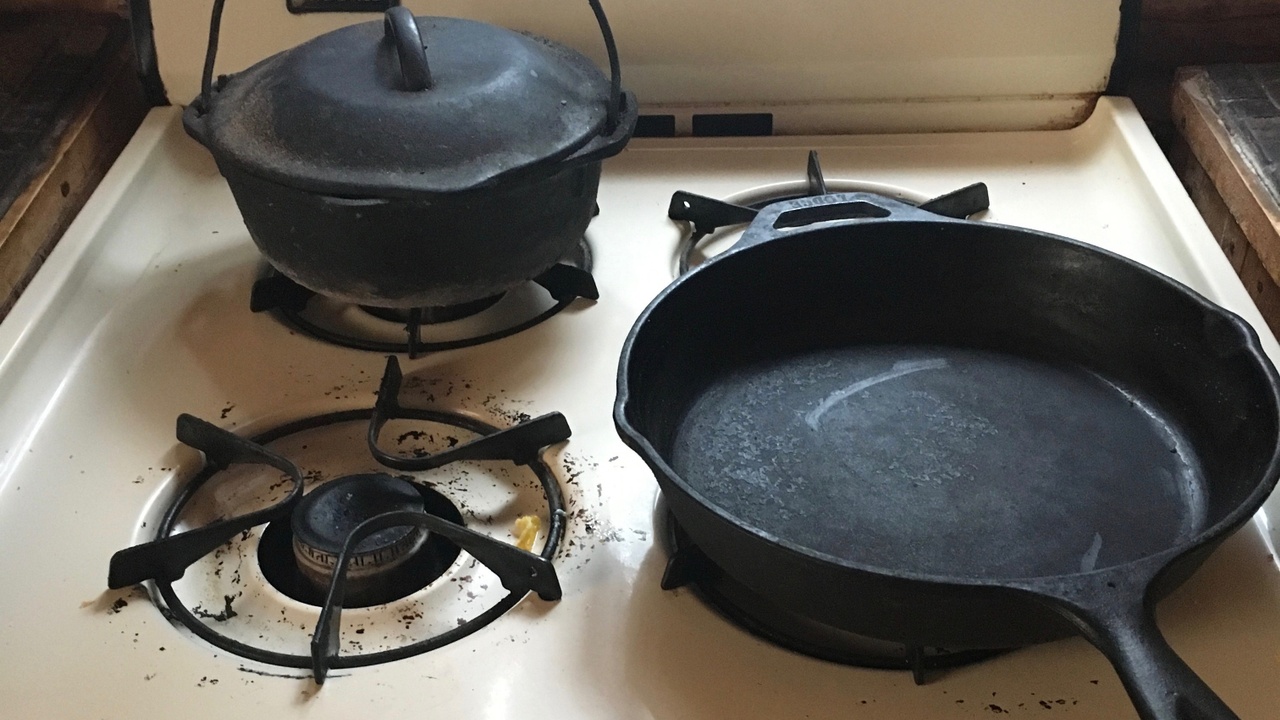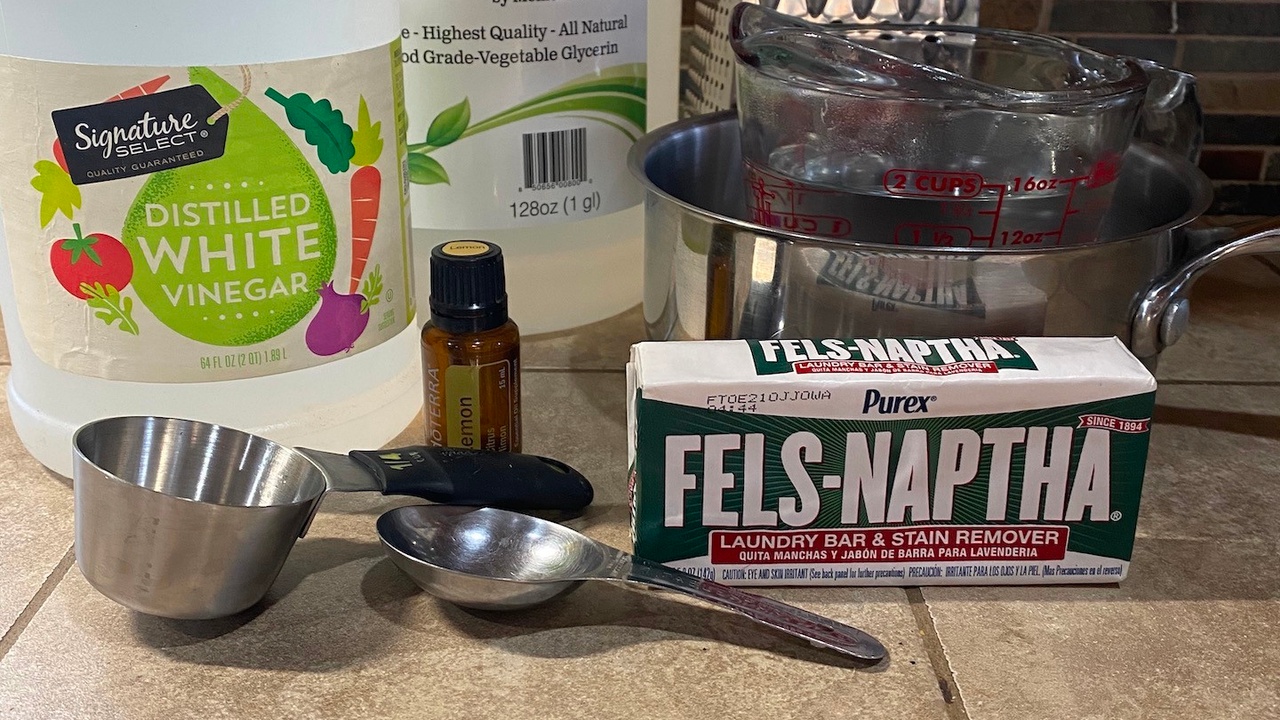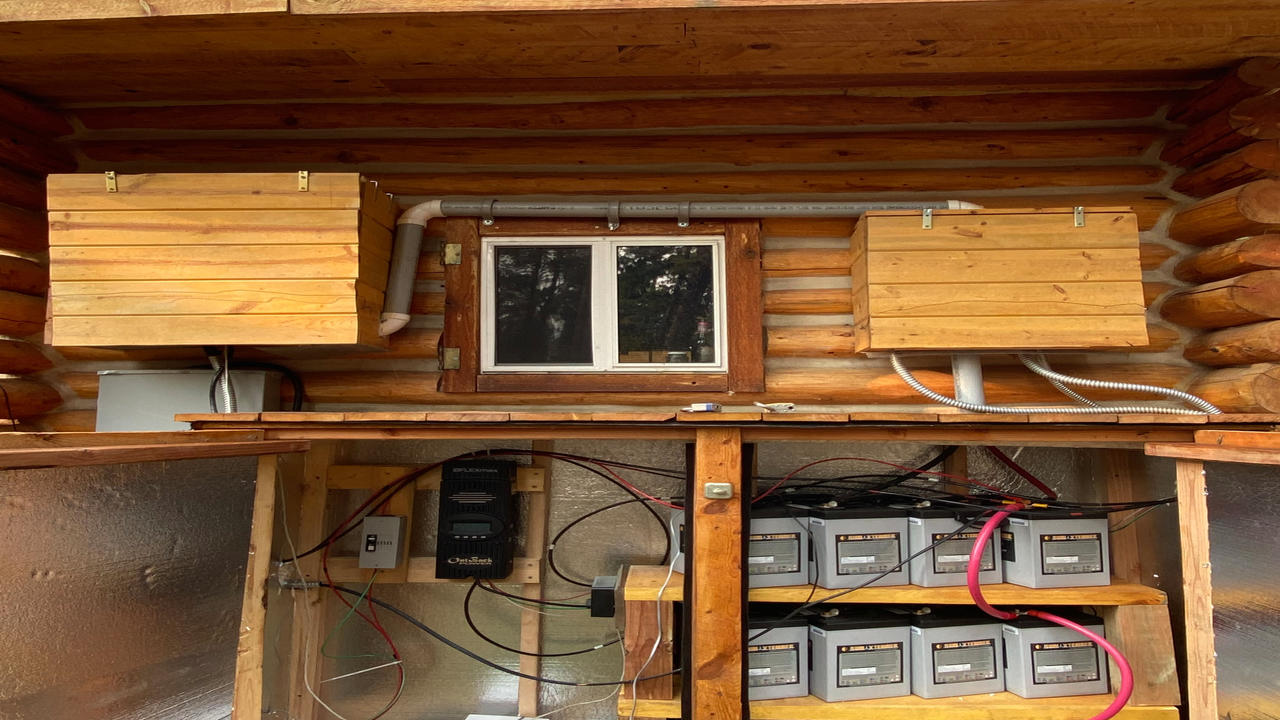Care and Use of Cast Iron Cookware

In one of my previous blog posts, Off Grid Cookware: What Are Your Options, I discussed somewhat at length the versatility and value in using cast iron cookware. This type of cookware is in fact one of my favorites for that very reason. When I think of cooking a meal, I reach for the cast iron cookware first.
My initial reason for switching to cast iron had nothing to do with the homestead. At the time, I cooked primarily with teflon. But, after reading a report about the toxicity of teflon when over heated, I immediately ditched the teflon and switched almost exclusively to cast iron.
Fast forward a few years to my homestead life, cast iron is my primary cookware due to its versatility and durability. I use it on the kitchen stove, in the oven, on top of the wood stove and in the wood stove. Over the years, I’ve experimented and learned many tricks for utilizing this valuable cookware.
History and Production of Cast Iron

Cast iron cookware has been around since the Han Dynasty i...
How to Make a Homemade Water Filtration System

In a previous post I discussed in depth about how to maintain a safe water supply and the importance of doing so. In that post I discussed various options such as water filtration systems, methods for disinfection, as well as how to purify water. I also revealed what we do at the homestead and how we produce purified water for less than 3 cents a gallon. In this post, I want to show just how easy it is to make a homemade water filtration system.
List of components
-Two Black Berkey®️ water filters
-Two 5 gallon food grade buckets with lids
-One water spigot
-Drill
Set up
Once finished, this system is essentially two 5 gallon buckets stacked on top of one another like this:

It is essential to have food grade buckets. DO NOT use buckets from your local hardware store as these ARE NOT SAFE for food and water storage due to the chemicals used in the manufacturing process. Food grade buckets can easily be found online from multiple sources. They can also be obtained FOR FREE from the ba...
Two Easy Homemade Products

One of the driving forces for our off grid life is to be as sustainable as possible. One of the underlying principles of sustainability is producing as little waste as possible. One effective way of doing that is to produce certain products at home. And that leads me to the subject of this post which is how to make two easy homemade cleaning products. Those two products are dish soap and laundry detergent.
We have been using both of these products for about 6 months. I have found the dish soap to be just as effective as any commercial product. The laundry detergent, hands down, is superior to any commercial product that I’ve used. Additionally 90% of the ingredients for these products come in packaging that is recyclable.
Easy Homemade Dish Soap
Ingredients:
-1/4 C Fels-Naphtha soap (laundry bar and stain remover), Castile soap, or similar bar soap
-2 Cups of water
-1 to 2 Tablespoon of white vinegar
-1 tablespoon vegetable glycerin (helps with thickening but is optional)
-3 to 5 dro...
Five Ways to Maximize the Use of a Wood Stove

Whether you live off grid, have a homestead, or live in the city, in my opinion a wood stove is an essential addition to the household. If you happen to have one already, there are several things you can do in order to maximize the use of your wood stove.
A Source of Heat
The first and most obvious function of the wood stove is for a primary or secondary source of heat. In fact because I live off the grid, the wood stove is my only source of heat. This works well because I have easy access to an almost unlimited source of firewood.
Even if you live in the city or you are otherwise grid connected, the wood stove is a great back up system. If the grid goes down for days to weeks due to a major storm or a natural disaster, you at least have an alternative source of heat. This has actually happened to me on several occasions. The last time was when I was living in South Carolina. An ice storm took out the utility grid and power was not restored for 10 days.
A Source of Hot Water
Besid...
DIY Heated Chicken Waterer
If you have a working homestead, then you know the value and importance in saving money. This not only applies to your household but also to the animals that provide you with food. In this post, I reveal a simple way to save money by making a heated chicken waterer.
What prompted me to work on this project was my frustration over having to replace my plastic watering devices. Since I live in a colder climate, the plastic waterers were cracking and breaking on a regular basis. I've had to replaced the heated model twice in the last year.
First I decided to go with a metal farm style watering fountain. Replacement cost for two of these was about $42. But, the heated base ranged in cost from $50 to $60. Not to mention the fact that they consumed about 125 watts per hour x 2.
The end result is that I needed to find an alternative. I needed something that was inexpensive, durable, and easily replaced. I purchase the metal watering fountains and after some research I found an easy way ...
Chainsaw Series: Introduction to the Chainsaw
There and numerous tools that are needed for the successful working homestead. In fact, I have a post that discusses the 100 Best Homestead Tools. However, one of the most important and useful tools around the homestead is the chainsaw. Yet it is one of the tools that can be intimidating and even feared by many people. That said, one of the purposes of this series of articles is to get you much more comfortable with using this valuable tool.
Chainsaws are either gas powered, battery powered, or electric. It depends on your particular application and location. For example, cutting firewood or clearing timber on the homestead will likely require a gas powered chainsaw. But, if you are pruning trees close to the house, an electric or battery powered tool may do the job.
Traditionally, the chainsaw has been used for cutting firewood and felling timber. However, chainsaws are also used by homeowners, construction workers, firefighters, as well as artists and sculptors.
Although this seri...
How I Built a Solar Battery Box for less than $50

Solar battery enclosures can range in price from a few hundred dollars to a few thousand. The price depends mostly on the size of the enclosure and the manufacturer. But, if you are a DIY kind of person, you can save yourself a considerable amount of money. This is what I did. I used some spare lumber and other materials I had on the homestead and I built a solar battery enclosure for less than $50.
First, I leveled out an area under the eave on the North side of the cabin. Then I place some left over landscaping brick on the ground for the battery enclosure to sit on. At this point, the solar panels have been mounted but of course none of the electrical work has been connected. You can see the AC loads panel for the cabin in the upper left of this photo.

The next step was to build the base and make sure that was level. For this part, i used some heavy duty rough cut timber that was left over from re-surfacing a bridge.

Then I framed in the back, then the top and side panels. A...
Adventures with Bears

Since I’ve had the cabin property I’ve had numerous interesting, and sometimes scary, encounters with wildlife. Just recently, I unexpectedly ended up nearly face to face with a rather large bull moose. Fortunately this encounter ended uneventfully and I walked away only with a huge adrenaline surge and a very rapid heart rate. Now this type of encounter does not happen every week but it does happen regularly. But, to understand why that is requires a little background information.
My cabin property has always been somewhat isolated and very private. I purchased the property in 1996 and to this day I still do not have any neighbors. My property is part of a quarter section, which is 360 acres, that is completely surrounded by National Forest. The property is 9 miles from the main highway. Access is off a spur road and through a portion of National Forest. The last mile is a private road.
You have to go through three locked gates in order to get to the cabin. The property sits on top ...
Simple Solar Project Part II
If you read my last post on off grid power and viewed the video on simple solar projects, you now know that some of these projects are in fact very easy to put together and require only some very basic knowledge of solar energy, wiring, and appropriate safety precautions.
After I put together that post, it occurred to me some people might be wondering about simple off grid power systems that come pre-packaged and ready to go. In the that post, I built a 200 watt solar array from scratch. However, there are many basic systems on the market that are “plug and play”. This simply means that you order a complete system, unpack it from the shipping boxes, follow the simple directions on how to plug things together, and you have a ready made source of off grid power.
While these simple off grid power systems are readily available, they are more geared toward mobility. This means that these systems are easy to pack up and relocate. Obviously this is advantageous if you are on a road t...
Construction of the Second Cabin
A number of years after building the log cabin, I decided that I wanted to expand. I truly wanted a cabin that was much more modern and with a few more amenities. But I also wanted to have additional living quarters so that friends and family could come to the property and stay for the weekend. All of this was going to required building another cabin.
The cabin project actually started a year or more before the actual construction was started. I first had someone excavate a large hole in order to bury a water cistern. Once that was complete, I hauled in the cistern, did the back fill, and buried it as much as possible.
The second step of this cabin project was to do the foundation work. I met with a contractor about the framing work, decided on a design as well as dimensions, and set about pouring concrete footings. I took a month off of work to complete this portion of the project.
It was actually more efficient, both time wise and financially, to pay someone to do the ...




